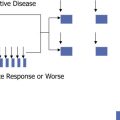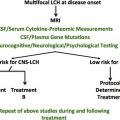Hemophagocytic Lymphohistiocytosis (HLH), an inherited life-threatening inflammatory disorder, has gained growing recognition not only in children but also increasingly in adults over the past 2 decades. HLH involves inborn defects in lymphocytes, which normally mediate control of infectious and inflammatory conditions within the immune system and in other tissues. In the context of inherited defects in cytotoxic cells and other immune cells, the disorder is classified as familial or primary HLH. Secondary HLH occurs in the settings of infections or underlying rheumatologic disorders. Secondary HLH also accompanies some lymphoid malignancies.
Key points
- •
Hemophagocytic lymphohistiocytosis (HLH), an inherited life-threatening inflammatory disorder, has gained growing recognition not only in children but also increasingly in adults over the past 2 decades.
- •
HLH involves inborn defects in lymphocytes (particularly in cytotoxic cells, such as natural killer [NK] cells, cytotoxic T cells, and T-regulatory cells), which normally mediate control of infectious and inflammatory conditions within the immune system and in other tissues.
- •
Cytotoxic cells form during hematopoietic development to include granules containing perforin and granzyme B, which are necessary to facilitate the subtle degradation of cells throughout the body, which are senescent and/or toxic to the organism.
Introduction
HLH, an inherited life-threatening inflammatory disorder, has gained growing recognition not only in children but also increasingly in adults over the past 2 decades. HLH involves inborn defects in lymphocytes (particularly in cytotoxic cells, such as NK cells, cytotoxic T cells, and T-regulatory cells), which normally mediate control of infectious and inflammatory conditions within the immune system and in other tissues.
Cytotoxic cells form during hematopoietic development to include granules containing perforin and granzyme B, which are necessary to facilitate the subtle degradation of cells throughout the body, which are senescent and/or toxic to the organism.
In the context of inherited defects in cytotoxic cells and other immune cells, the disorder is classified as familial HLH (FHLH) or primary HLH. Secondary HLH occurs in the settings of infections (eg, Epstein-Barr virus [EBV] infections) or underlying rheumatologic disorders (often described as macrophage activation syndrome [MAS]). Secondary HLH also accompanies some lymphoid malignancies.
Introduction
HLH, an inherited life-threatening inflammatory disorder, has gained growing recognition not only in children but also increasingly in adults over the past 2 decades. HLH involves inborn defects in lymphocytes (particularly in cytotoxic cells, such as NK cells, cytotoxic T cells, and T-regulatory cells), which normally mediate control of infectious and inflammatory conditions within the immune system and in other tissues.
Cytotoxic cells form during hematopoietic development to include granules containing perforin and granzyme B, which are necessary to facilitate the subtle degradation of cells throughout the body, which are senescent and/or toxic to the organism.
In the context of inherited defects in cytotoxic cells and other immune cells, the disorder is classified as familial HLH (FHLH) or primary HLH. Secondary HLH occurs in the settings of infections (eg, Epstein-Barr virus [EBV] infections) or underlying rheumatologic disorders (often described as macrophage activation syndrome [MAS]). Secondary HLH also accompanies some lymphoid malignancies.
Disease description
In patients with FHLH, inborn defects of lymphocyte cytotoxicity lead to ineffective infection control and immune dysregulation. Patients with FHLH are likely to manifest the clinical disorder in childhood, on rare occasion with symptoms noted in utero. This immune activation is manifested by abnormally high levels of predominantly proinflammatory cytokines, including interferon gamma and interleukins (ILs) IL-1, IL-6, and the compensatory down-regulating cytokine IL-10.
Consequent clinical findings include high-grade fevers, progressive cytopenias, coagulopathy, and a broad spectrum of neurologic symptoms, including seizures and altered sensorium. More recently, there has been a wider recognition that fulminant liver failure may be an early and rapidly evolving presentation of HLH; swift immunosuppressive and anti-inflammatory treatment can occasionally obviate emergency liver allograft.
The first documented description of what is now called HLH was published by Farquhar and Claireux at the University of Edinburgh in 1952. They recognized the constellation of signs and symptoms noted in a brother and sister healthy at birth, who developed recurrent unexplained fevers, “progressive panhematopenia,” hepatosplenomegaly, and bruising noted in the 3rd month of life. At autopsy, both children manifested “inflammatory cell infiltration”; mainly lymphocytes and plasma cells were found, many of which manifested erythrophagocytosis and cells in the liver and “highly reactive marrow.” A “great proliferation of histiocytes” was found; “many of these histiocytes showed erythrophagocytosis and others contained lymphocytes and polymorphs.”
Diagnostic criteria for HLH have been developed and reviewed more recently by the Histiocyte Society ( Box 1 ). The most prevalent early findings include fevers (persistent or frequent), cytopenias typically involving 2 or more lineages, and liver dysfunction. Hemophagocytosis in the bone marrow, cerebrospinal fluid, or other sites in the context of aforementioned symptoms suggest a strong probability of active HLH. The likelihood is greatly strengthened by the coincident detection of high levels of the inflammatory molecules: ferritin and soluble IL-2 receptor (age dependent) in the blood. Splenomegaly may be palpable or may be observed radiologically. These features are seen in children and adults.
- 1.
Fever
- 2.
Splenomegaly
- 3.
Cytopenias (affecting 2 of 3 lineages in the peripheral blood)
- a.
Hemoglobin less than 90 g/L (in infants <4 weeks: hemoglobin <100 g/L)
- b.
Platelets less than 100 × 10 9 /L
- c.
Neutrophils less than 1.0 × 10 9 /L
- a.
- 4.
Hypertriglyceridemia and/or hypofibrinogenemia
- a.
Fasting triglycerides greater than 3.0 mmol/L
- b.
Fibrinogen less than 1.5 g/L
- a.
- 5.
Hemophagocytosis in bone marrow or spleen or lymph nodes
- 6.
Low or absent NK-cell activity
- 7.
Ferritin greater than 500 μg/L
- 8.
Soluble IL-2 receptor greater than 2400 U/mL
One of the more problematic diagnostic criteria recommended by the Histiocyte Society is quantitation of NK cell function. Classic NK cytotoxic assays assume that the proportion of circulating NK cells is in normal range in the blood sample; this is not always known. More quantitative studies include quantitation of the perforin expression within NK cells and the degranulation assay (testing active function of NK cells); these assays should only be sent to certified laboratories that perform significant numbers of such assays.
Genetics of hemophagocytic lmphohistiocytosis
To date, 12 distinct genetic disorders resulting in HLH have been defined; 9 disorders are expressed due to biallelic autosomal recessive gene defects, whereas 3 are X-linked. Importantly, 10 of the genetic defects can be rapidly screened for by flow cytometry assays ( Fig. 1 , Table 1 ).








